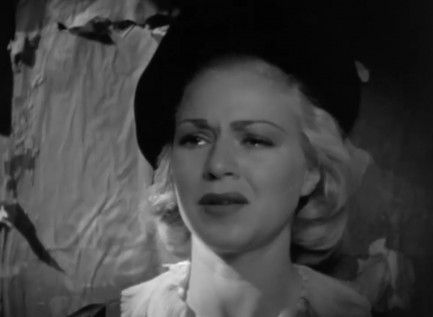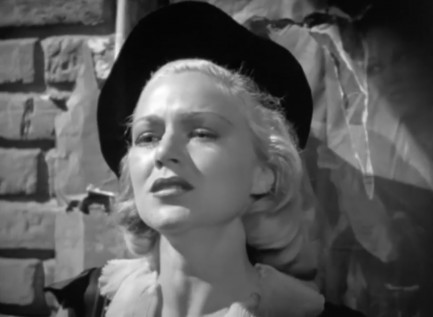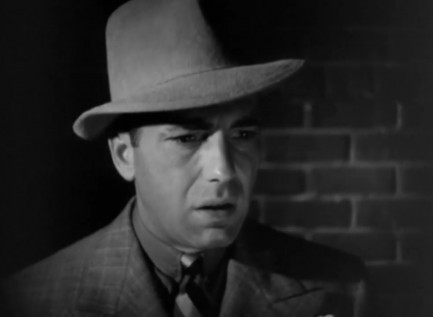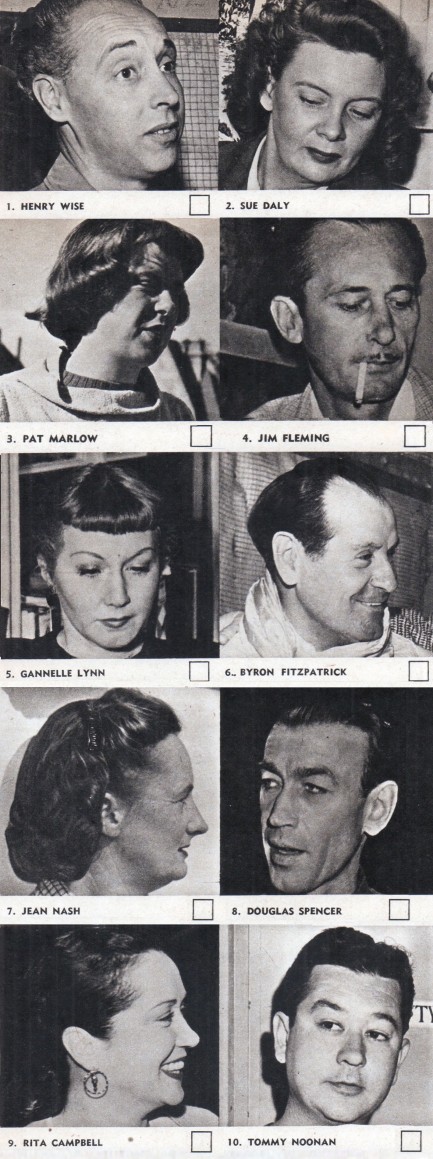 Fontaine returns for another deadly installment of the hunger dames. 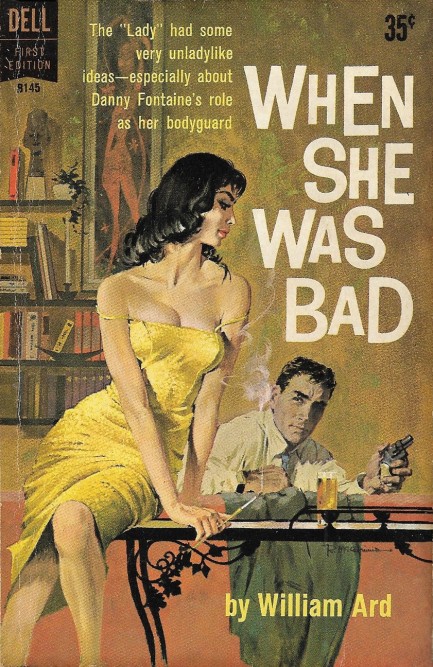
It's official. William Ard, in all his incarnations, is a trusted author. In 1960's When She Was Bad, the follow-up to 1959's As Bad As I Am, Danny Fontaine is now a fledgeling detective on his first case. Many mid-century detectives are ladykillers, but Fontaine is on a level that silences rooms when he enters. He's what women these days might amusingly call a “dilf”—a detective I'd like to fuck. His job is to locate a missing minor royal, a thrillseeker who's caused a ruckus from Grand Bahama to New York City but now may be in trouble way over her head. Fontaine mixes with women ranging from a marquess related by marriage to the Queen of England to a trio of top rank call girls, and they all fall hard for him. His efforts to earn his wings as a private operator under these circumstances are often funny and always exciting. Simply put, Ard's got skills. The cover art on this Dell edition is by Robert McGinnis, and he's got skills too.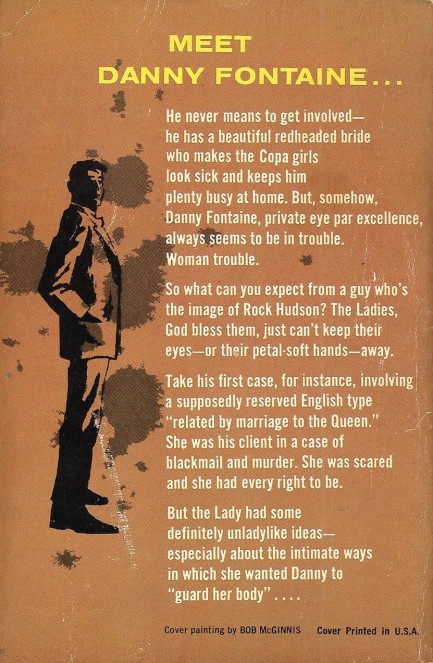
 Get away from him you bitches! 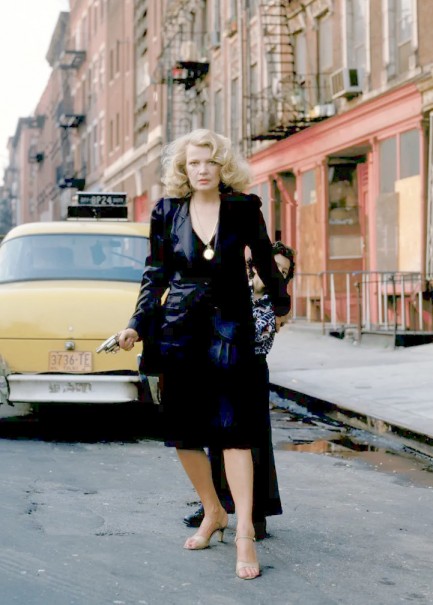
Many reviews of the classic movie Aliens point out the subtext of mother instinct rekindled under violent circumstances, but that idea predates Sigourney Weaver's awesome 1986 performance. The closest example we can think of is the 1980 thriller Gloria. Gena Rowlands, who you see above in full mama bear mode, tries to protect an eight-year-old boy from vicious animals (the Mafia) in a deadly and hostile place (the Bronx). Where Weaver has outlived her entire family due to hibernation in space and loves children, Rowlands is a gangster's moll who has outlived her childbearing years and claims to hate children. Both characters are catalyzed by a youngster's innocence, have a strong sense of justice, and face the longest possible odds. Do yourself a favor and watch the movie. Also: check the absolutely badass pose below. 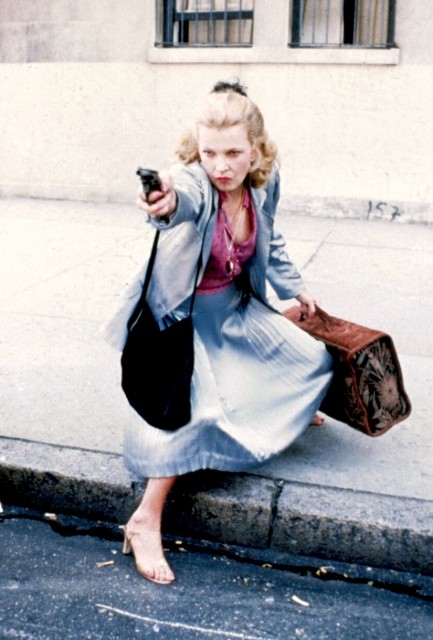
 The future is a dead Issue. 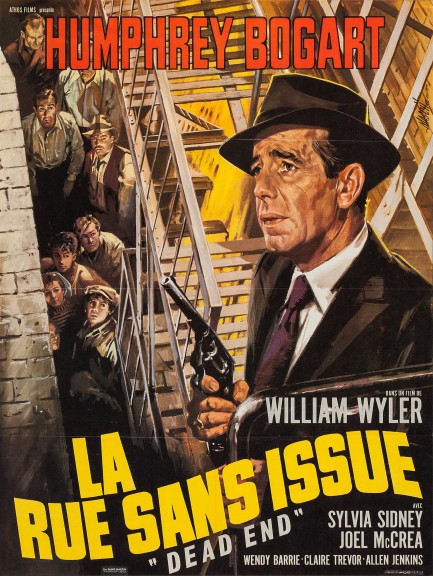
Once again we've chosen what we think is the best poster for a vintage film. In this case it's the urban drama Dead End with Humphrey Bogart, and the poster is one painted by Jean Mascii for the French release as La rue sans issue. Bogart features prominently in both the art and film, but the rest of cast includes Sylvia Sidney, Joel McCrea, Claire Trevor, and Wendy Barrie. We're talking good, solid actors—two of them future Academy Award winners—and they make Dead End an excellent movie. In addition it was based on a play by Sidney Kingsley, with the script penned by Lillian Hellman, more top talent. Kingsley had already won a Pulitzer Prize, and Hellman had written many hit plays. The plot of Dead End covers a day on a slummy dead end street in Manhattan on the East River, and the characters that interact there. The area is in the midst of gentrification, with fancy townhouses displacing longtime residents mired by the effects of the Great Depression. Because of construction on the next block the cosseted owners of a luxury home must for several days use their back entrance, which opens onto the dead end street. Thus you get interaction between all levels of society. There are the lowliest streets punks, an educated architect who can't find work, a woman who intends to marry for security instead of love, a gangster who's returned to his old neighborhood hoping to reconnect with his first love, and the rich man and his family.
There's plenty going on in the film, but as always we like to keep our write-ups short, so for our purposes we'll focus on the gangster, Humphrey Bogart, and his former girl, Claire Trevor. Bogart has risen to the top ranks of crime through smarts and ruthlessness, but to him Trevor represents a cleaner past and possibly a better future. He waits on the street for a glimpse of her, and when that finally happens he's thrilled. Trevor is less so, but there's no doubt she still loves Bogie. When he says he'll take her away from the slum she balks. It soon dawns on Bogie that she doesn't intend to leave, and he's devastated and confused. Trevor is evasive at first, then, pressured by Bogart, finally shouts, “I'm tired! I'm sick! Can't you see it! Look at me good! You're looking at me the way I used to be!” With that she moves from shadow:
Into light: Bogart takes a good look, from bottom to top:
And he realizes she is sick. Though it's unspoken, he realizes she has syphilis. All his dreams come crashing down in that devastating moment. He's disgusted, and it leads to an astonishing exchange of dialogue.
Bogart: Why didn't you get a job?
Trevor: They don't grow on trees.
Bogart: Why didn't you starve first?
Trevor: Why didn't you? Well? What did you expect?
Bogart escaped the poverty of that dead end street through organized crime, and killed on his rise to riches. Trevor had to survive through prostitution. Bogart thinks he's better than her; she tells him he's not. In his toxic male world, murder is less offensive than sex. He's the one who's twisted—not her. In addition to a great film moment, it's a clever Hays Code workaround. Nothing about sex, prostitution, or venereal disease could be stated, but through clever writing, acting, context, and direction—by William Wyler—the facts were clear to audiences. The rest of the story arcs are just as involving, and the movie on the whole is a mandatory drama. Dead End premiered in the U.S. in 1937, and in France today in 1938.
 After she homicides Johnny, she's going to homicide everyone else who ever crossed her too. 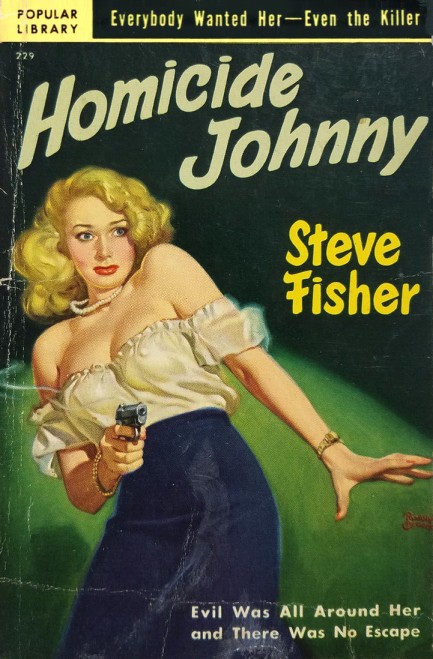
We've returned to Steve Fisher, as we said we would, after reading his 1954 social drama Giveaway. We chose Homicide Johnny because of the title and the Rudolph Belarski cover art. The tale stars Johnny West, a cop in tiny Mamaroneck, New York, about to give up his badge for a private detective gig in far away San Francisco, but who's pulled into one last case. A priceless anti-streptococcic compound has been stolen, and West not only has to solve the crime, but must work with his ex-girlfriend, police investigator Penny Lane. She has a very good if not photographic memory—which is too bad for Johnny because she can't forget or forgive that time he cheated on her. Collaborating with someone who seems to despise you isn't easy, but without trust and cooperation a murderer just might generate more victims. Spoiler alert: he does. Despite Steve Fisher's good rep, we consider Homicide Johnny to be average, even with its unusual medical research backdrop and relationship tension. But there was nothing in it to discourage us from trying him again, so expect to see him here down the line.
 Columbia Pictures gives moviegoers a fuller picture of one of its top stars. 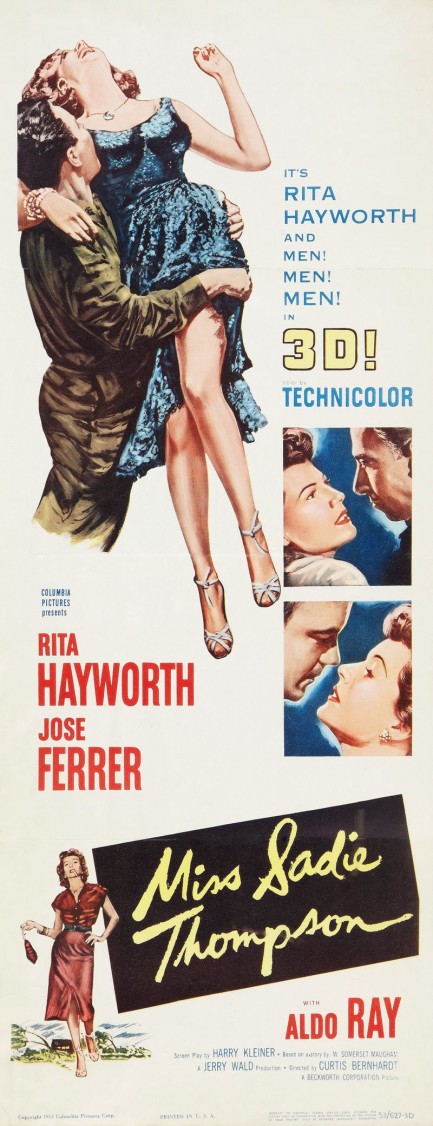
Above is a poster advertising the drama Miss Sadie Thompson. When we watched the movie a few years ago we had no idea it had been in 3-D. It seems like a strange choice for such treatment. Now we'll have to watch it again and see what things are thrust at the camera. We're hoping whatever they are, they're all attached to Rita Hayworth. In the meantime, below is a flyer also touting the film's 3-D run. Though it was supposed to premiere “at Christmas,” the American Film Institute tells us it actually first showed on December 23 in New York City, before receiving a nationwide opening in February 1954. The phrase “at Christmas,” we suppose, might imply anytime during the season. Sadie Thompson is an interesting movie, though not Hayworth's best. You can read our pithy thoughts here.
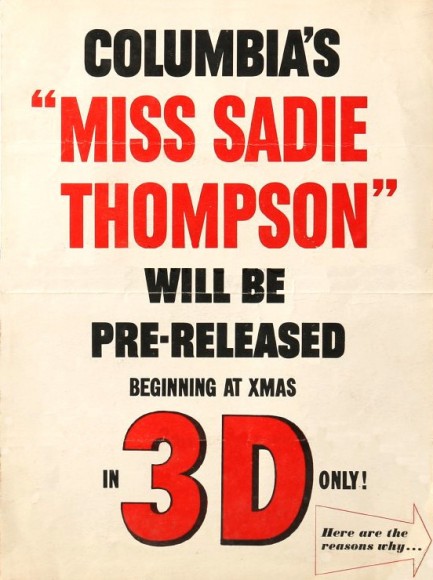
 I believe you that it's life or death, honey. But believe me it's also life or death that I finish my toes. 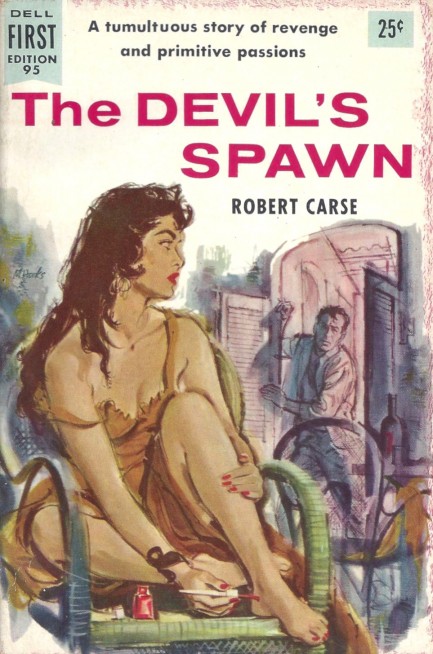
The Devil's Spawn was a random acquisition, a cheap throw-in within a six-book lot. It's a 1956 Dell original with cover art by Mitchell Hooks, was written by Robert Carse, and is a very interesting and unusually graphic tale about an escapee from Cayenne Prison in French Guiana (now Guyana) who lives under a new identity in New York City, but learns that one of the four men he fled with has been targeted by a blackmailer. That means, as the protagonist Jean Prevot puts it, “the trail might be followed down to the next, and the next.” That's exactly what happens, and the blackmailer is from Cayenne Prison, the one person everyone there feared—its sadistic executioner, known as le Bouc.
That's a compelling set-up for a novel, and Carse is an able writer. Especially interesting are his shifts from third-person narrative into second-person deliberations and reveries, without the expected italics to offset the latter from the former. The flow between these passages gives the story an occasional trancelike quality. Also interesting is that Prevot takes intelligent countermeasures. For example, in order to neutralize the blackmail threat, he immediately confesses his past to everyone in his inner circle, most importantly his wife. That's real-world smart, but isn't what most authors would choose. Most would use secrecy as a wedge between Prevot and his loved ones, giving even more initiative to the men who threaten to expose the truth. Carse goes a different way.
But the core of the threat remains even after Prevot brings his inner circle up to speed. Either he does what le Bouc says, or le Bouc informs French authorities that a notorious fugitive—who, by the way, killed a guard during his escape—is alive and well in New York City. If Prevot is caught he'll lose his wife, the lucrative career he's built, and anything resembling a future. That's as far as we'll go in describing the book, except to say that it's a good, gritty ride. Carse will be another one we watch for during our digging for dusty old paperbacks.
 A long day's journey into sleaze. 
After reading Stan Shafer's Heat, which we tried only because it had Kitty Swan on the front, and Rand McTiernan's Doctor's Dirty Tricks, which we tried only because it had Christina Lindberg on the front, we had one of our recurring cycles of interest in ’60s and ’70s sleaze novels and decided to download a few. First up is 1971's Hard Rider by Conrad Grimes, which we chose because it was published by top sleaze imprint Midwood. The book is about pals Annie and Claudia, who buy a van, paint it psychedelically, and set out from Kentucky to see the world. Or at least the United States. Or at least the groovy parts. They head east to New York City, then west to San Francisco, and manage to have all the expected cultural-sexual adventures of the era. They unknowingly star in clandestinely filmed pornography, sojourn in an all women's commune called the Sisterhood that's devoted to eradicating men, and enjoy sweet lesbian love with each other. Annie eventually finds her place as a West Coast political radical, and Claudia finds home and hearth in the heartland. The book is nothing special, on any level, even though it's incredibly raunchy. But even raunch demands skill. Grimes could use more.
 Tom Neal takes an alternate route directly to trouble. 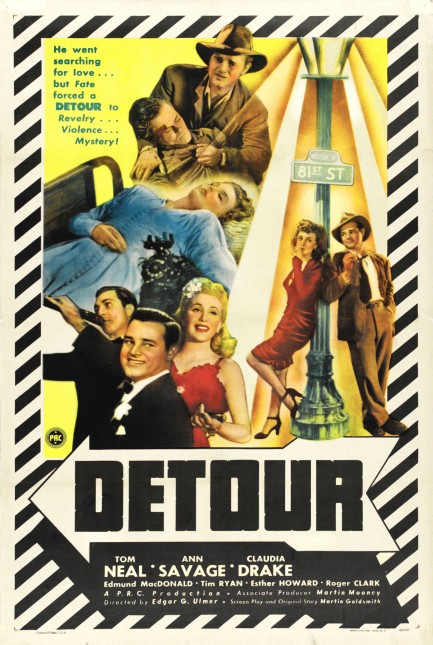
Years ago we shared a poster for the low budget Tom Neal/Ann Savage film noir Detour, which premiered today in 1945. That promo is a photo-illustration and one of our favorite film noir posters. Above is an alternate poster for the movie, and it's also nice, but not in the same class as the previous piece. We touched on the movie only briefly back then, making a few comments from our memories of seeing it years earlier, but we gave it a close watch yesterday for the first time in a long while. Tom Neal stars as a nightclub musician who hitchhikes from New York City to Los Angeles to reunite with his girlfriend, who'd gone there earlier to try her luck in show business. He takes a ride from a “Miama” bookie, ends up accidentally killing him, and flees with the car. The next day and a ways down the road he picks up another hitchhiker—Ann Savage—who happened to have accepted a ride from the bookie earlier. Neal has picked up the only person in the world who can turn his bad luck into a one-way trip to the gas chamber. She figures out right away that the bookie must be dead, and uses her knowledge to cruel advantage:
“Just remember who's boss around here. If you shut up and don't give me any arguments, you'll have nothing to worry about. But if you act wise, well, mister, you'll pop into jail so fast it'll give you the bends. [snip] As crooked as you look, I'd hate to see a fella as young as you wind up sniffin' that perfume that Arizona hands out free to murderers.”
You get plenty of film noir attributes here: tough dialogue, voiceover, flashback, nightmare, silhouette, rear projection, rain, fog, bad luck, terrible decisions, lonely highway, and a dangerous femme fatale. Thinking beyond the confines of the screenplay, there's an interesting discussion to be had about why Savage is so mean. There's a suggestion that men have made her that way, and an equal amount of suggestion that she's bad by nature. In either case, she's one of the worst passengers any snakebitten cinematic sap ever picked up on the road. She makes Detour about as good as cheapie film noir gets.
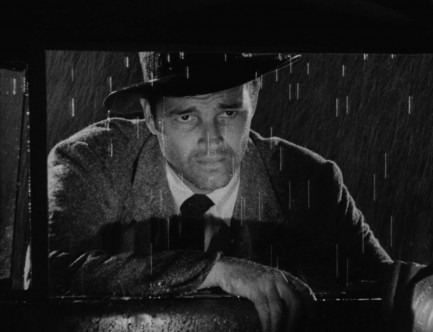 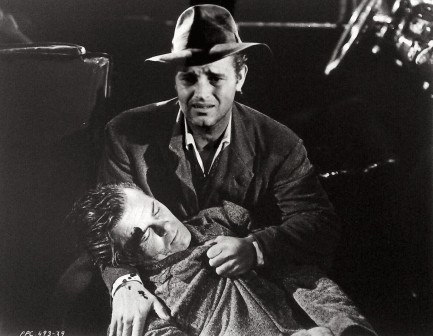 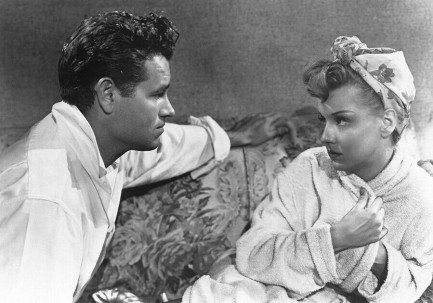 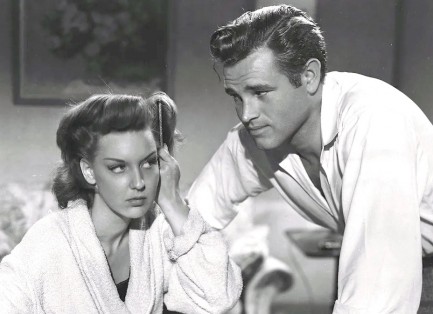 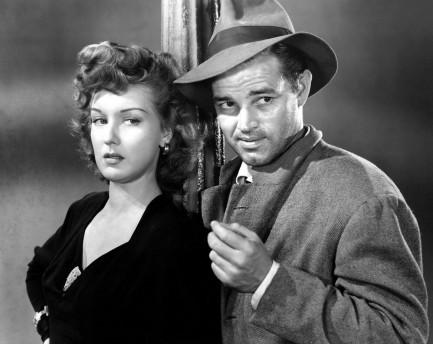
 For every job there's a perfect tool. 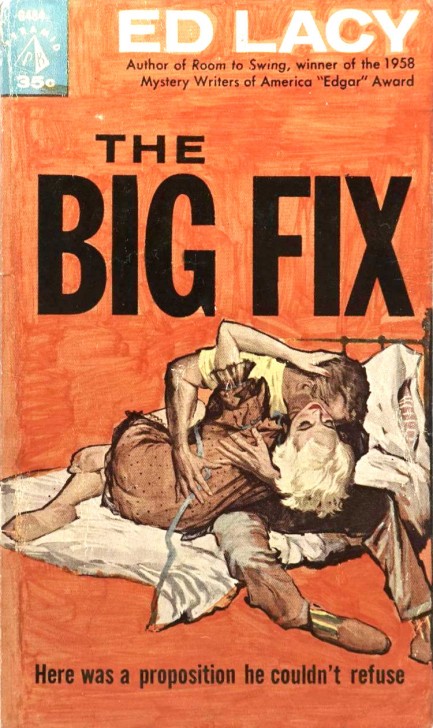
In Ed Lacy's 1961 boxing drama The Big Fix, the fix is defnitely in, and in the worst way possible. Tommy Cork, a thirty-something middleweight boxer who in his prime battled Sugar Ray Robinson, becomes the pet project of a dilletante boxing manager who promises that with the best training, diet, and promotion Cork can reach the top again. Sounds good, but Tommy has unwittingly become the focus of a deadly scam, a plan to find some desperate boxer with a reputation for ugly losses, make a show of training him for high profile bouts, all the while taking out a life insurance policy on him, then having a hammerfisted accomplice kill him in the ring. Since the murder will happen before a crowd, there will be no suspicion of foul play, particularly for a pug known for fighting stubbornly and hitting the canvas hard.
But nothing is straightforward in Lacy's hands. Tommy's wife May, hopeful for a better life, gets into trouble with violent numbers runners, an aspiring writer sees the couple as the perfect pathetic characters to be the focus of a novel, an ex-boxer cop starts to get wise to the murder scheme, and other twists come from nowhere to infinitely complicate the tale. Despite the subplots, as readers you know the only fitting climax is one that takes place in the ring, and Lacy pushes the story inexorably toward that showdown, hapless Tommy facing off against a man who plans to kill him with a relentless assault, or if possible a single blow. If he's going to have help, he'll need to provide it himself. As usual, Lacy tells a good story. He's reliably full of excellent ideas. That also goes for Ernest Chiriacka, who painted the eye-catching cover.
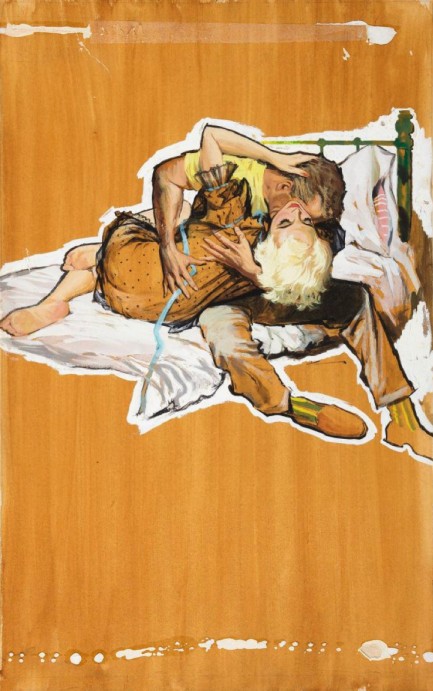
 In show business the camera never sleeps. 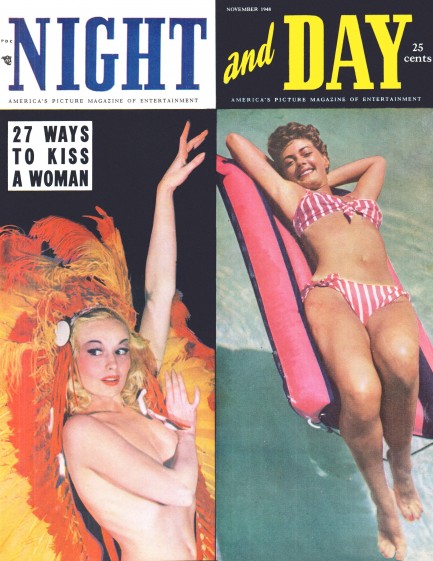
Night and Day, for which you see the cover of an issue—its very first issue, actually—that was published this month in 1948, billed itself as America's Picture Magazine of Entertainment. It was launched in New York City by Alho Publishing, and as you'll see it came out of the gate swinging for the fences with its visual content, from its bisected cover featuring burlesque dancer Lili St. Cyr and actress Ramsey Ames, to its tongue-in-cheek feature on the twenty-seven types of kisses, to its approving look at George White's Scandals revue at Hollywood's Florentine Gardens. Interesting side note on Scandals—Wikipedia says it ended in 1939. Well, obviously not quite. Elsewhere Night and Day touches on college hazing, professional football, and the Greenwich Village art scene. In total, it's a gold mine for vintage photos.
Our favorite offering in the magazine is its quiz on Hollywood stars and their stand-ins. You just have to take a good look at twenty performers, and try to determine which twenty random people are their stand-ins. To score well on such a quiz you'd have to be either the biggest Hollywood head in history or someone who has the opposite of face blindness, whatever that would be. Face unforgettability, maybe. Even though we don't expect many people to try the quiz, we worked hard to put it into internet-usable form. In the magazine the photos were five-across on the page, which made them too small for the column width of our website. So we rearranged them to be two-across, and thus enlarged, they're clear, though you have to do a lot of scrolling. Nevertheless, it's there if you want, along with fifty other panels to eat your time with marvelous efficiency. Please enjoy.  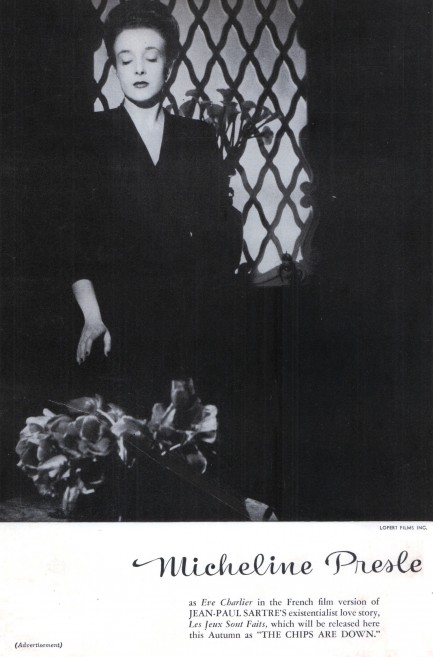 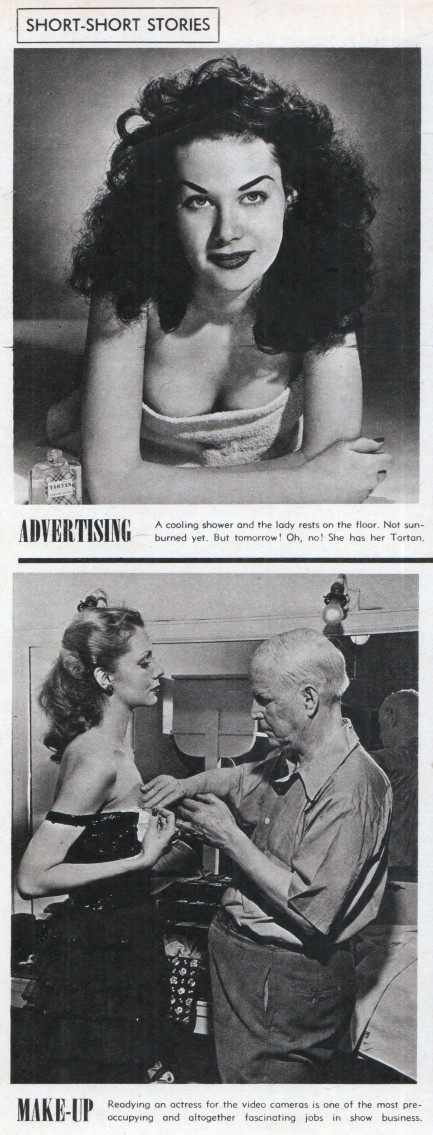 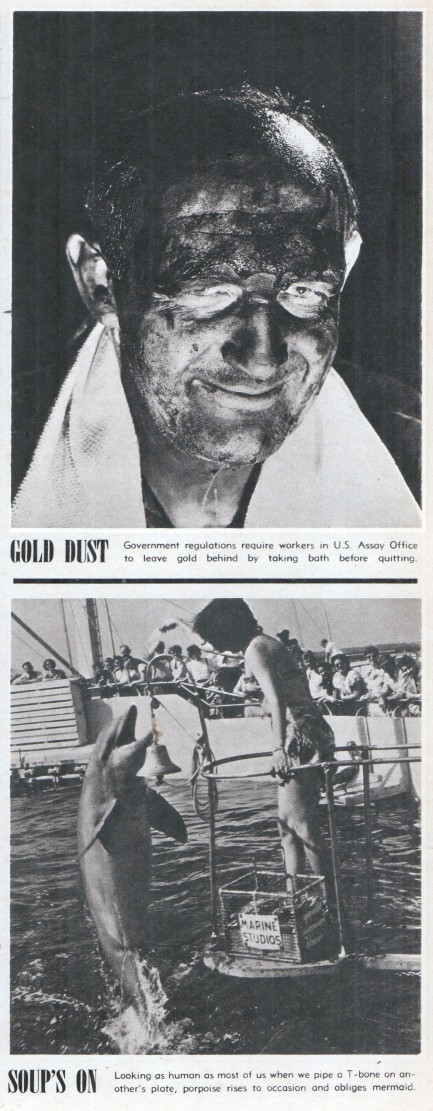 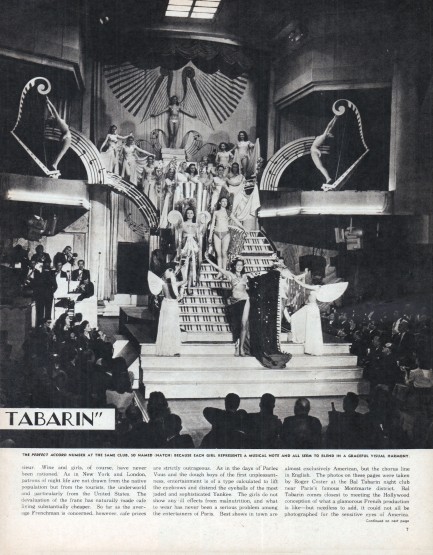 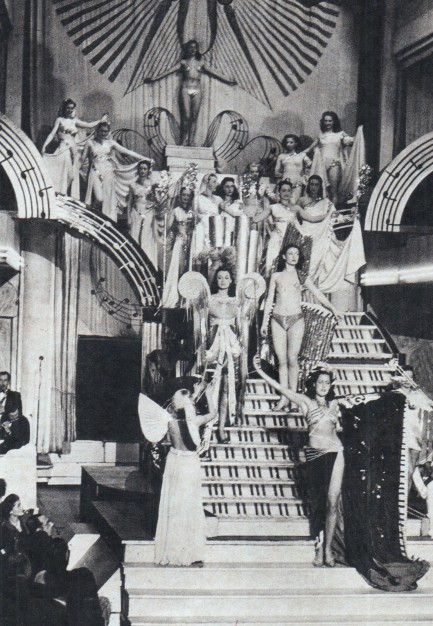 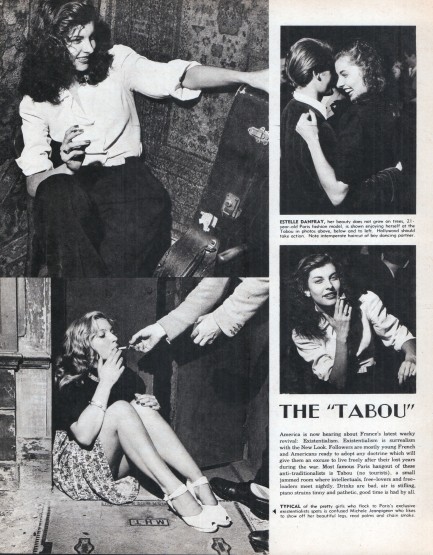  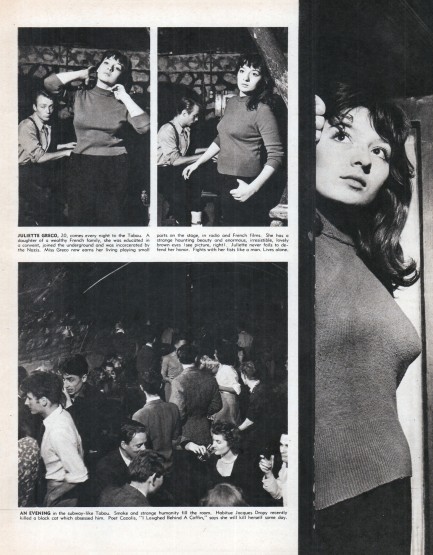 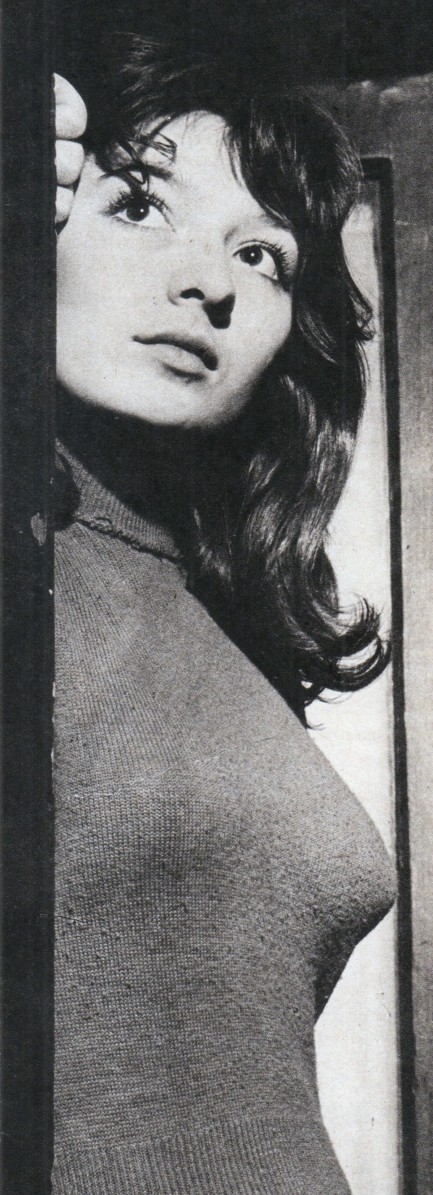 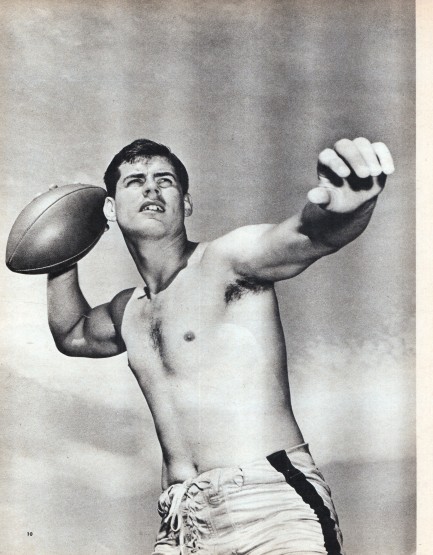 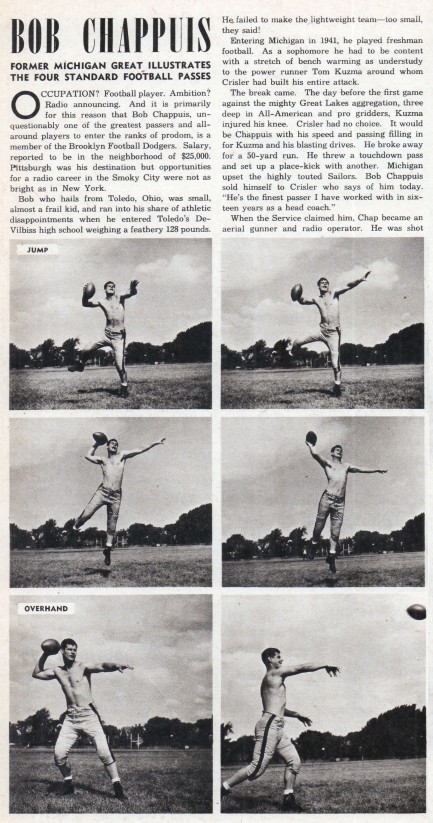 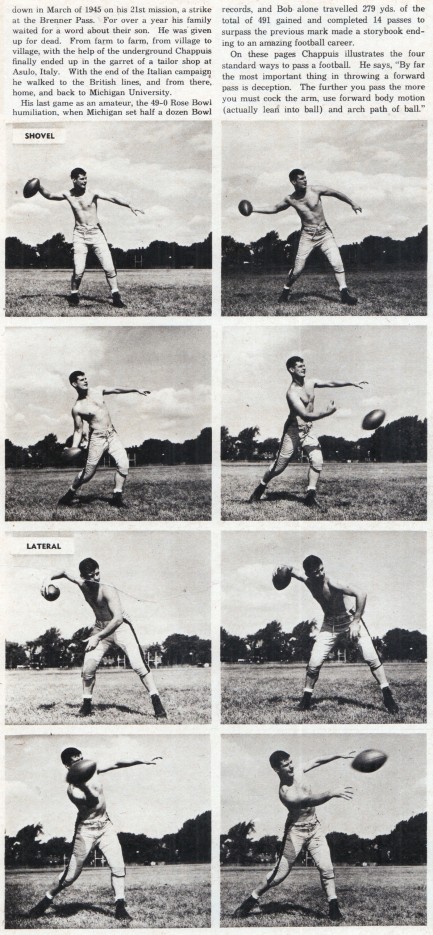 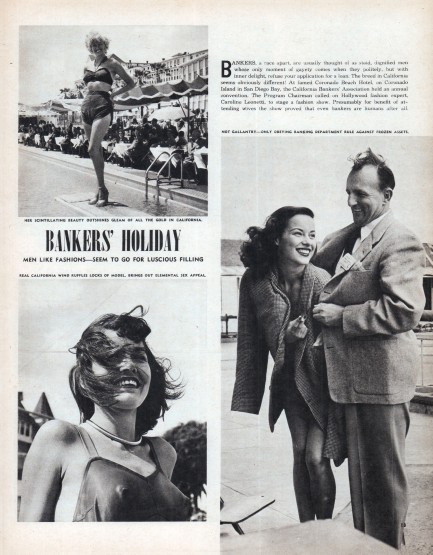 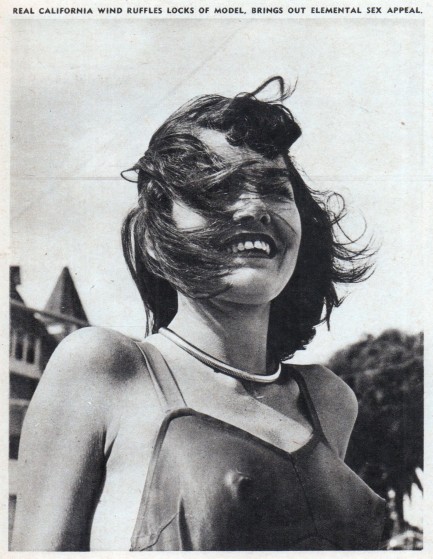 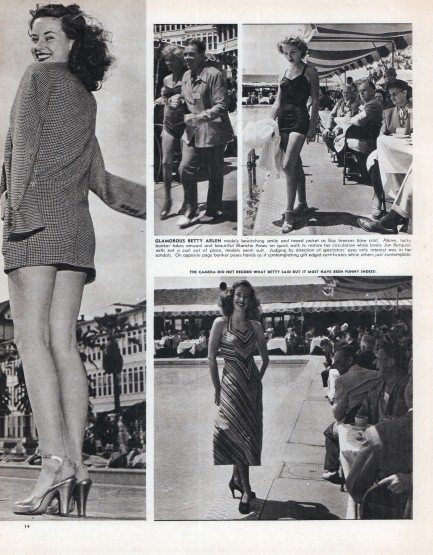 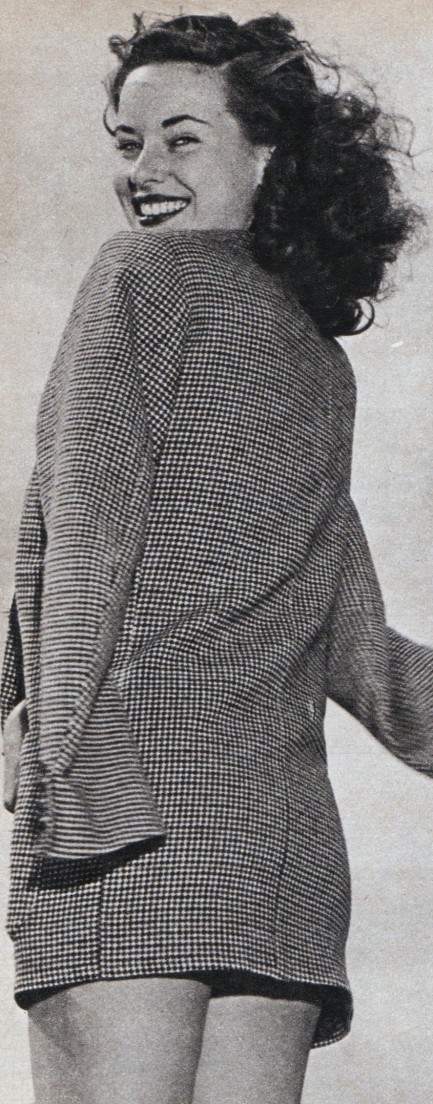 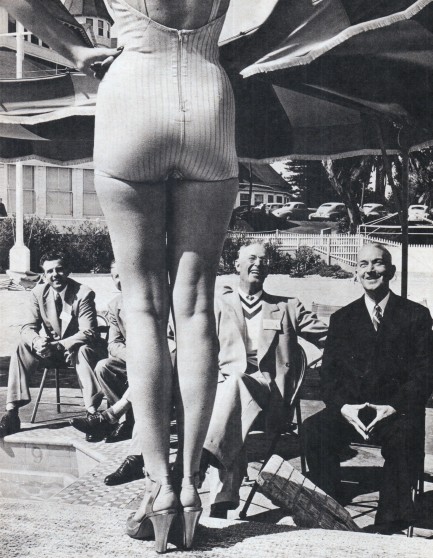 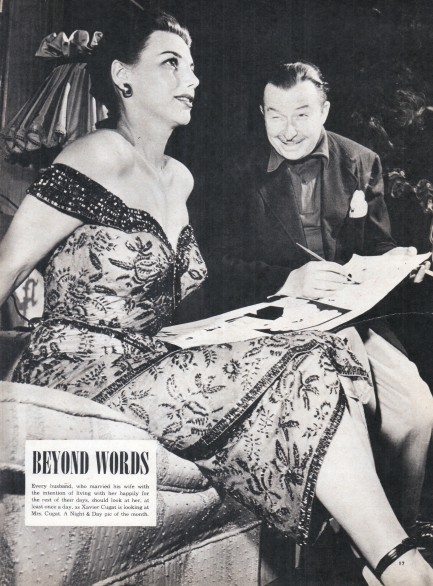 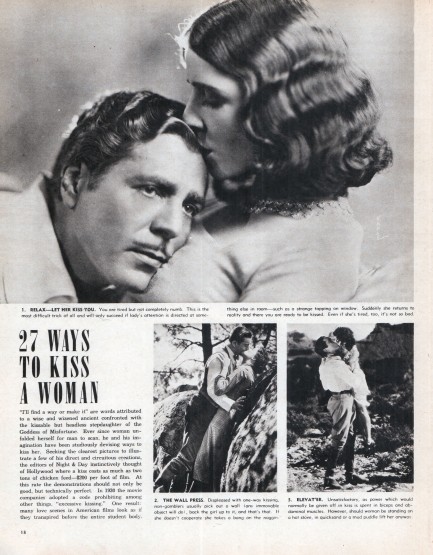 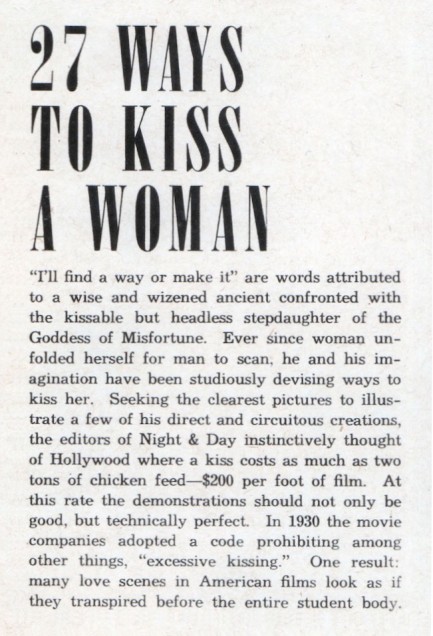 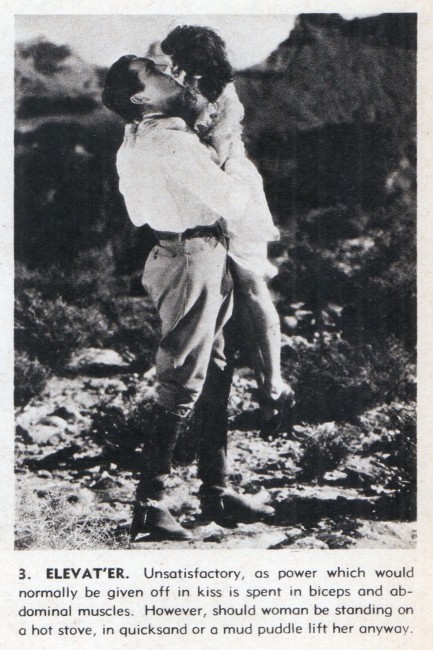 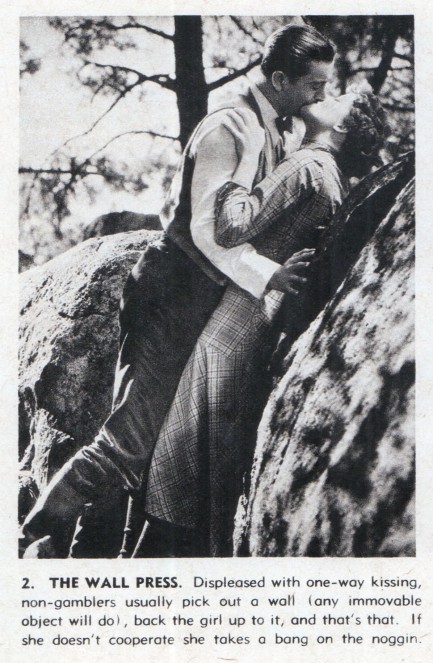 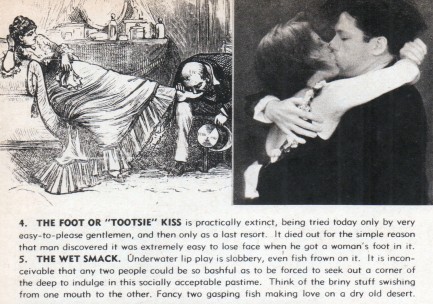 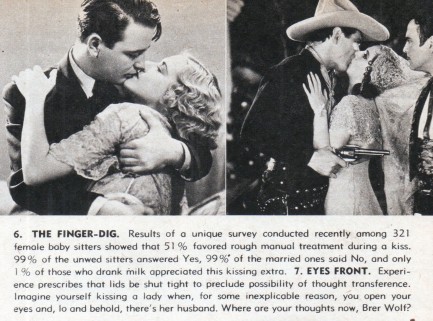 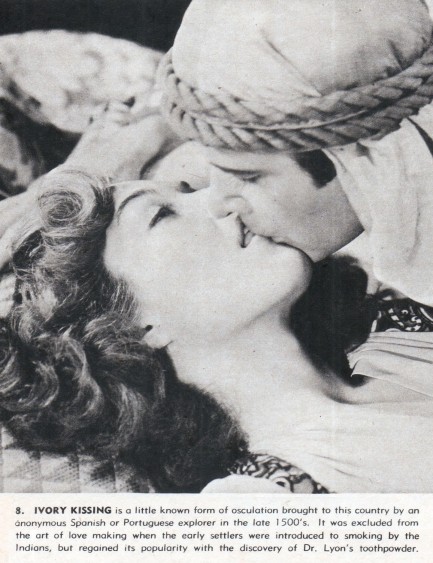 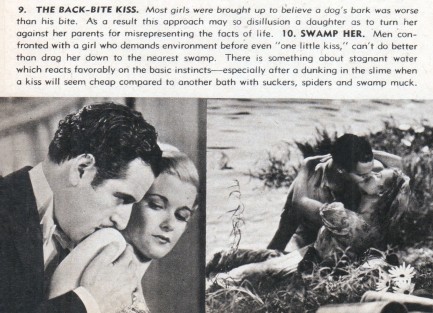 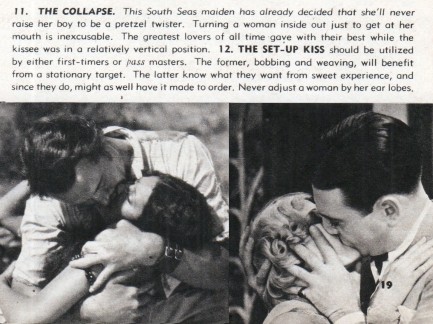 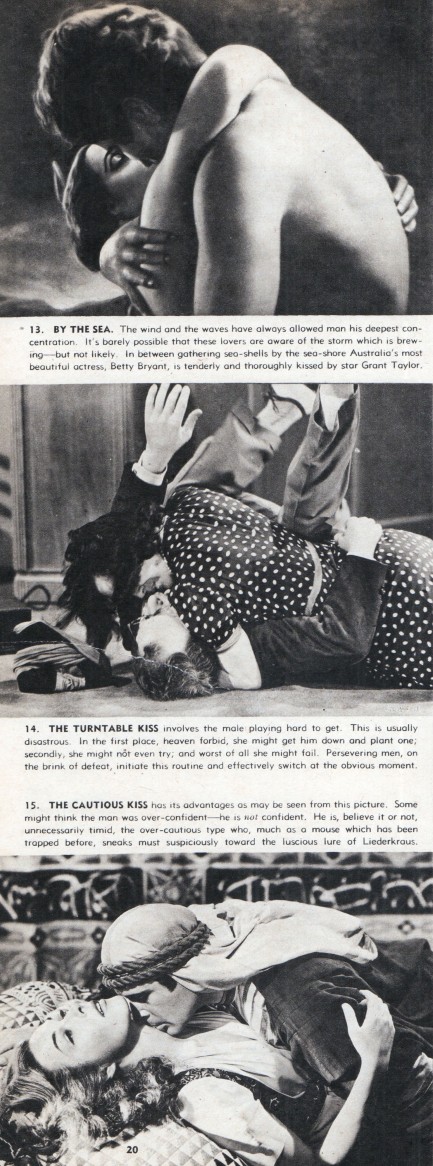 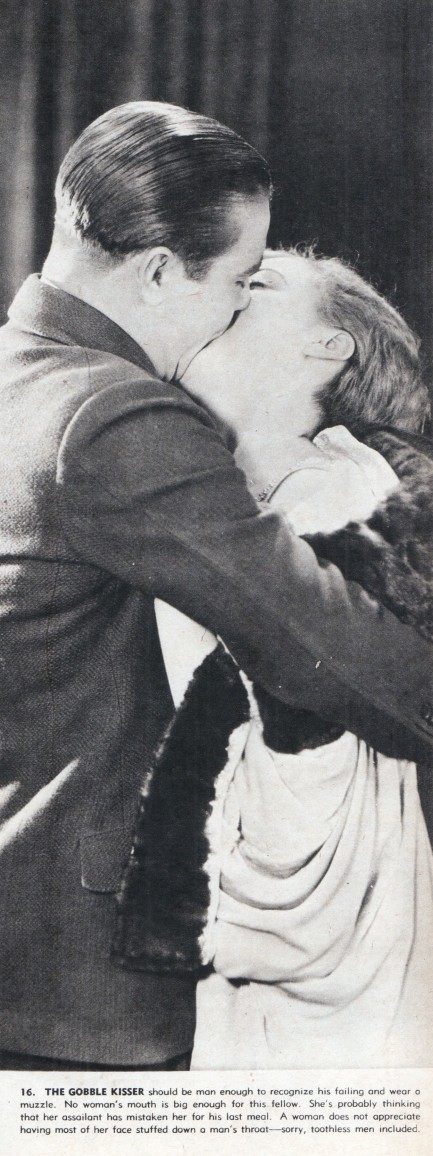 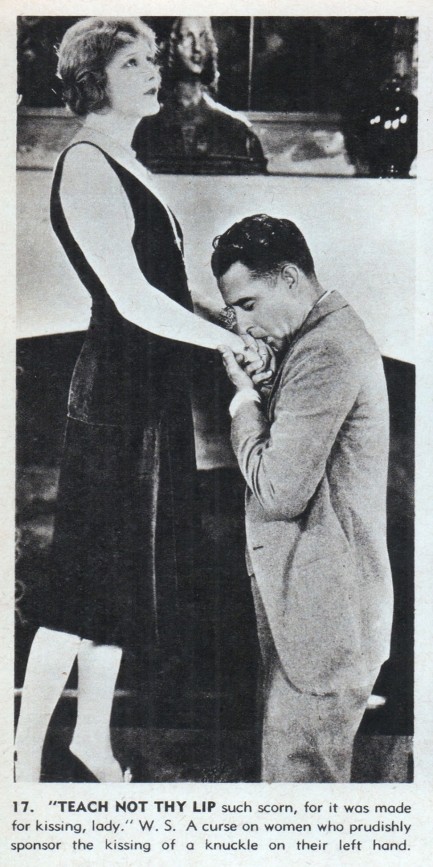 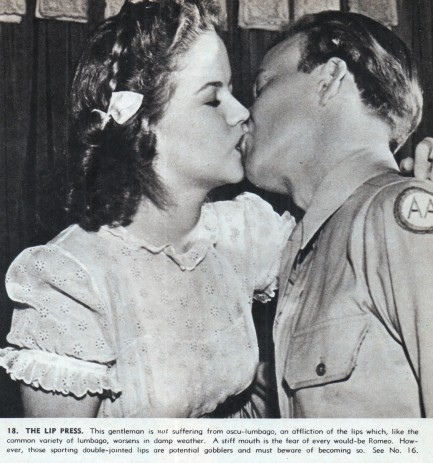 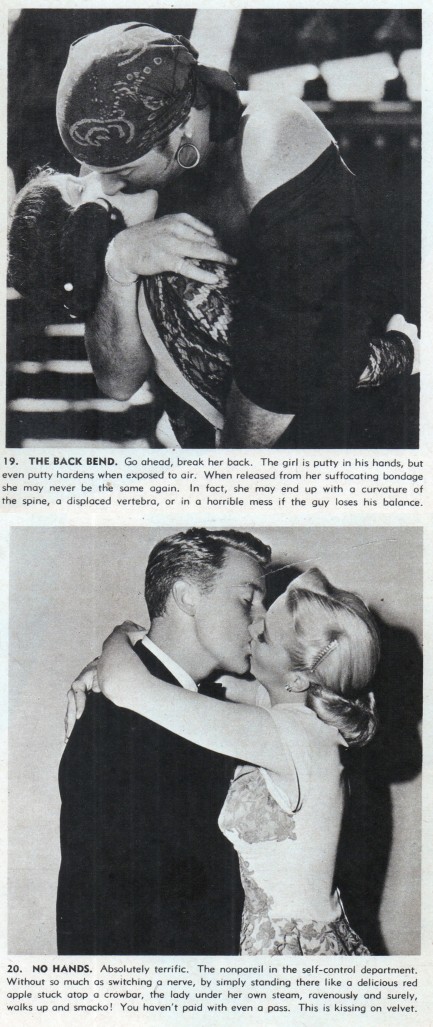   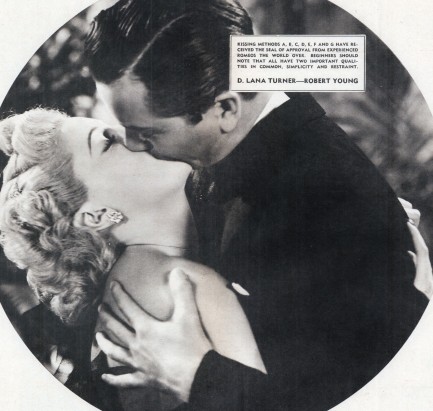  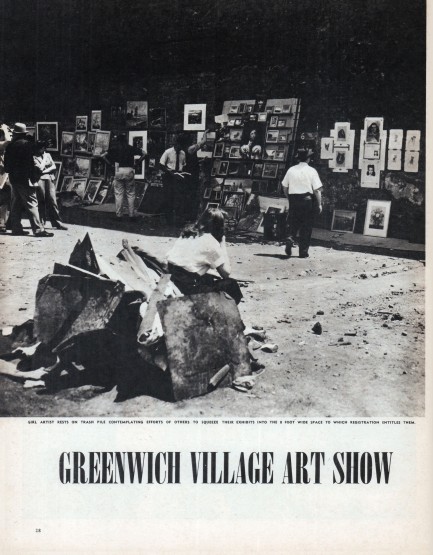 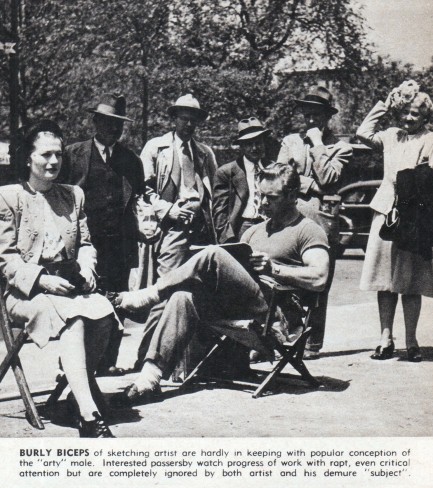 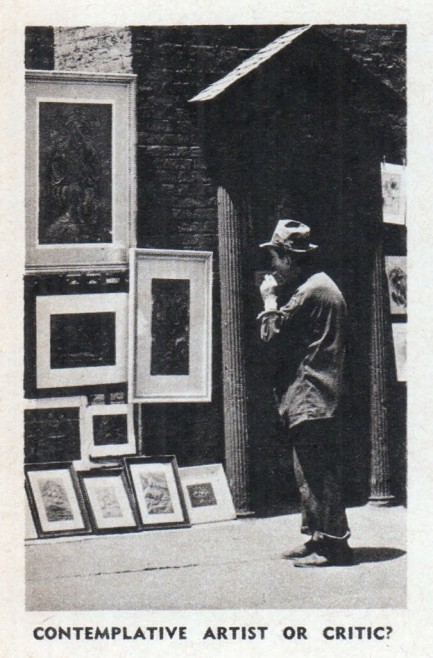 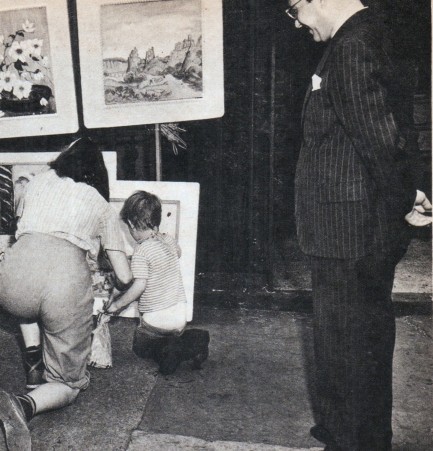 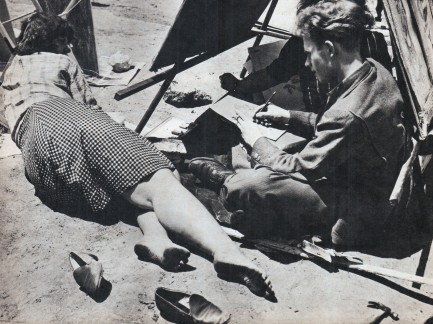 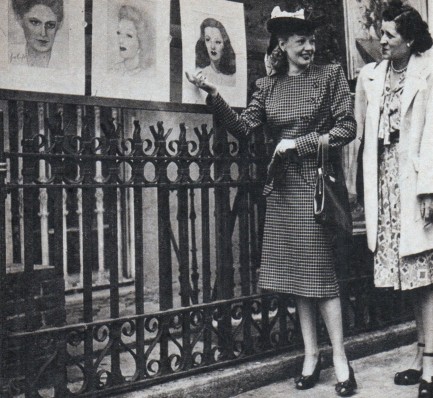 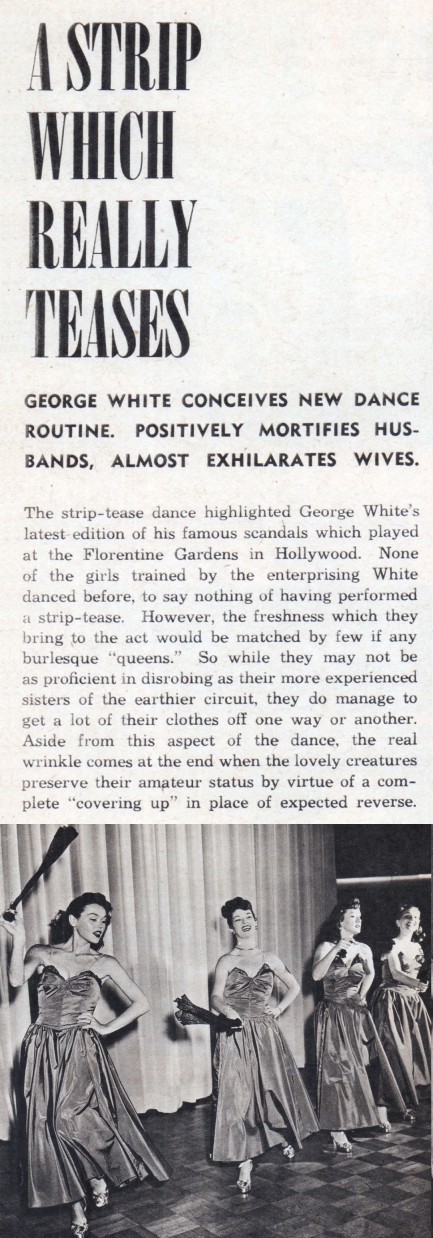 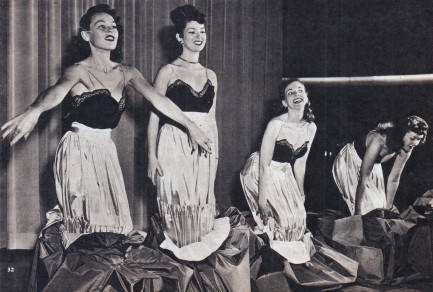 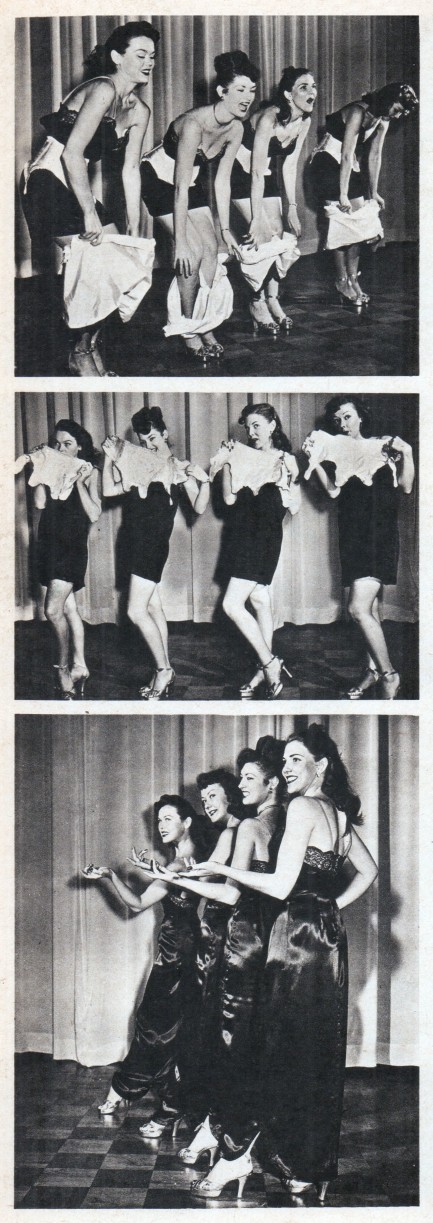 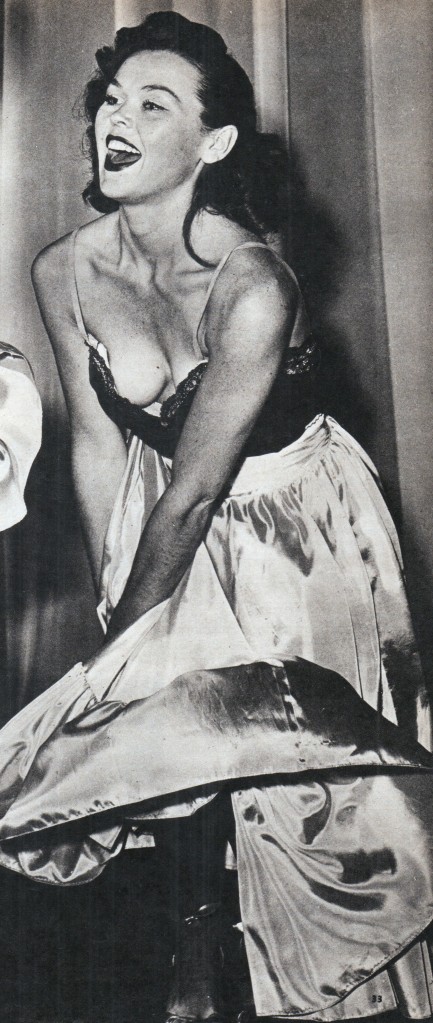 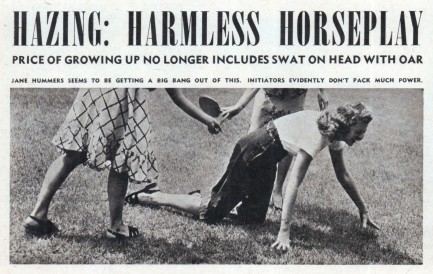 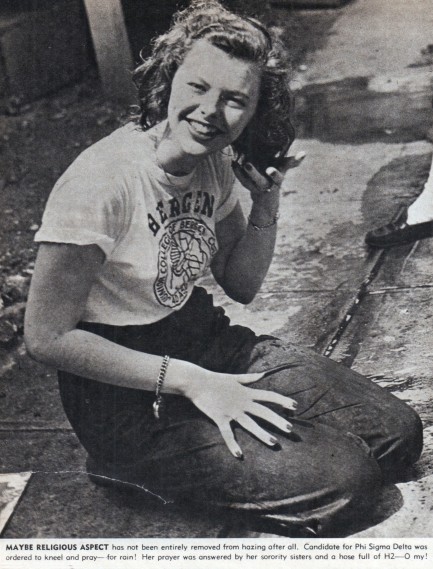 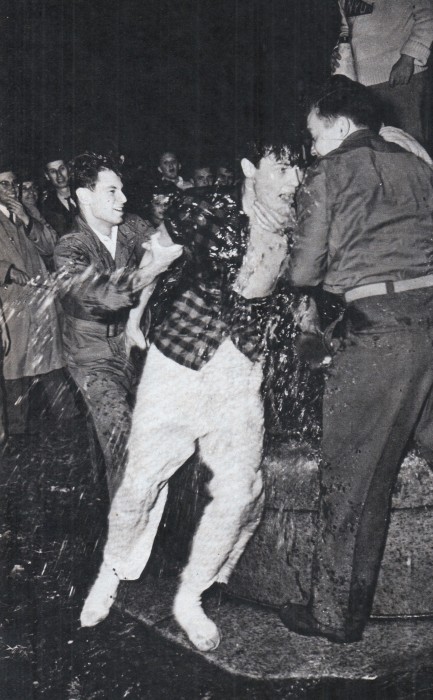 The Hollywood movie star stand-in quiz begins below. First you get twenty famous actors and actresses: And below are their twenty stand-ins. If you get more than half of these right you're a human face recognition algorithm. Quit your day job immediately and report to the FBI. Below are the answers.
 |  |
|
 |

The headlines that mattered yesteryear.
1926—Aimee Semple McPherson Disappears
In the U.S., Canadian born evangelist Aimee Semple McPherson disappears from Venice Beach, California in the middle of the afternoon. She is initially thought to have drowned, but on June 23, McPherson stumbles out of the desert in Agua Prieta, a Mexican town across the border from Douglas, Arizona, claiming to have been kidnapped, drugged, tortured and held for ransom in a shack by two people named Steve and Mexicali Rose. However, it soon becomes clear that McPherson's tale is fabricated, though to this day the reasons behind it remain unknown. 1964—Mods and Rockers Jailed After Riots
In Britain, scores of youths are jailed following a weekend of violent clashes between gangs of Mods and Rockers in Brighton and other south coast resorts. Mods listened to ska music and The Who, wore suits and rode Italian scooters, while Rockers listened to Elvis and Gene Vincent, and rode motorcycles. These differences triggered the violence. 1974—Police Raid SLA Headquarters
In the U.S., Los Angeles police raid the headquarters of the revolutionary group the Symbionese Liberation Army, resulting in the deaths of six members. The SLA had gained international notoriety by kidnapping nineteen-year old media heiress Patty Hearst from her Berkeley, California apartment, an act which precipitated her participation in an armed bank robbery. 1978—Charlie Chaplin's Missing Body Is Found
Eleven weeks after it was disinterred and stolen from a grave in Corsier near Lausanne, Switzerland, Charlie Chaplin's corpse is found by police. Two men—Roman Wardas, a 24-year-old Pole, and Gantscho Ganev, a 38-year-old Bulgarian—are convicted in December of stealing the coffin and trying to extort £400,000 from the Chaplin family. 1918—U.S. Congress Passes the Sedition Act
In the U.S., Congress passes a set of amendments to the Espionage Act called the Sedition Act, which makes "disloyal, profane, scurrilous, or abusive language" about the United States government, its flag, or its armed forces, as well as language that causes foreigners to view the American government or its institutions with contempt, an imprisonable offense. The Act specifically applies only during times of war, but later is pushed by politicians as a possible peacetime law, specifically to prevent political uprisings in African-American communities. But the Act is never extended and is repealed entirely in 1920.
|

|
|

It's easy. We have an uploader that makes it a snap. Use it to submit your art, text, header, and subhead. Your post can be funny, serious, or anything in between, as long as it's vintage pulp. You'll get a byline and experience the fleeting pride of free authorship. We'll edit your post for typos, but the rest is up to you. Click here to give us your best shot.

|
|








